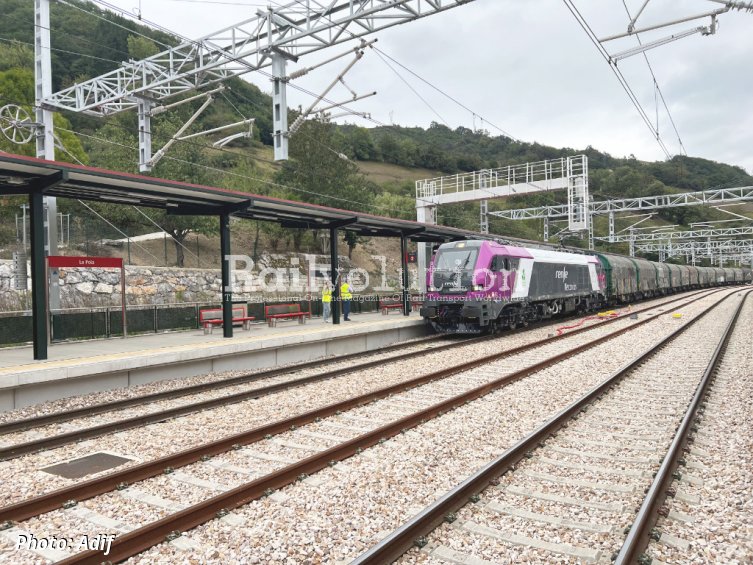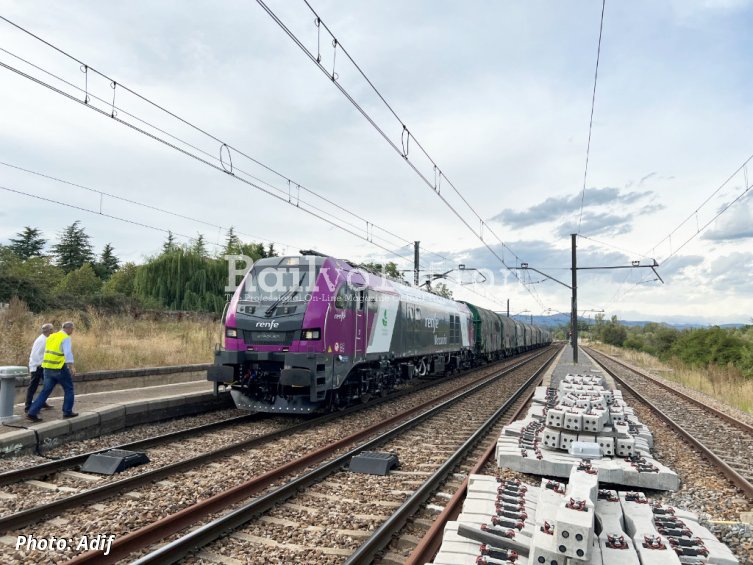First commercial test train on Pajares Variante
posted on 4th Sep 2023 13:34
There is no point in running a test freight train unless it carries a commercial payload. Such was the case when the final session of verification testing started on the new high speed line between Pola de Lena and La Robla on 1 September 2023.
The Renfe Mercancías train departed from Avilés at 15.55, with a trailing load of 810 tonnes of steel products, including coils. It took just 42 minutes to traverse the 49.7 km Variante and averaged a speed of just under 60 km/h. This was 1 h 18 less than this service usually takes, ascending the existing 1,668 mm gauge line over the Pajares pass, where, on account of the state of the infrastructure, there are several speed restrictions to 30 km/h (the line limit here is 80 km/h for passenger services). During the testing phase on the new line freights will be limited to 100 km/h, while passenger trains (empty) will run at a maximum of 200 km/h.
Variante de Pajares - reliability testing starts
At present all seems to be on schedule for a public inauguration of the high speed line from La Robla to Pola de Laviana, under the Cordillera Cantábrica, at some date in November this year.
In late August Adif Alta Velocidad announced that the next phase of readying the new railway for commercial services was about to start. This will involve the use of Class 130, 730 and 121 trains, three of the types that will be used on the line, on a series of test runs taking place between midnight and 05.00. In all around 3,000 km of test running are to be clocked up, each of the train types undertaking four complete journeys daily between León and either Pola de Lena or Ujo, together with various other shorter runs on the section between La Tobla and Campomanes (where the gauge changers are situated) or Pola de Lena. Speeds of up to 200 km/h will be attained, even though the infrastructure is designed for 275 km/h running.
So far dynamic tests involving diagnostics, clearance and catenary characteristics of the infrastructure have been completed, together with ERTMS testing and the static load testing of viaducts and underbridges. The next stage, during September, and following the submission of a report on the verification tests to the Agencia Estatal de Seguridad Ferroviaria, will be a series of simulations involving the evacuation of passenger and freight trains in the event of incidents. Driver route learning will be the final step.


